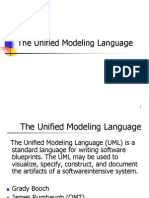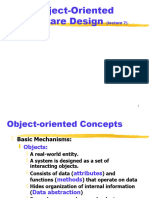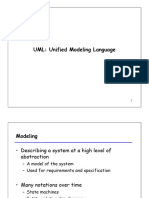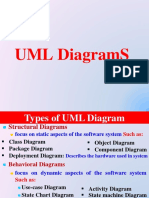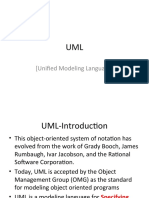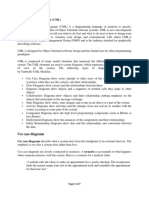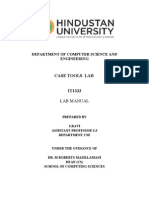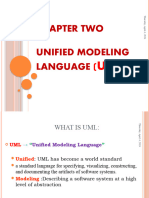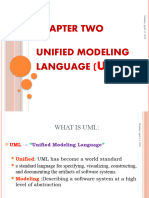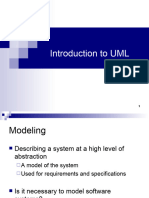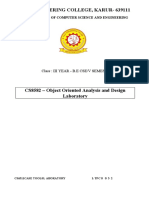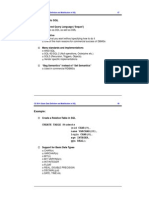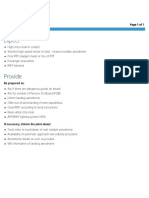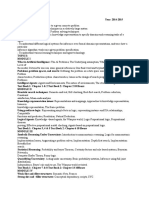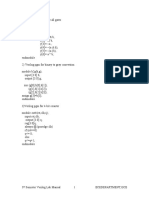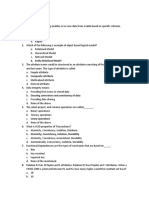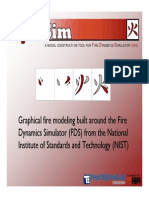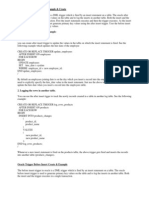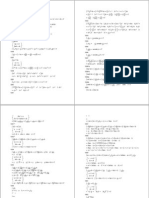0% found this document useful (0 votes)
124 views32 pagesDiagramet UML
The document provides an overview of the Unified Modeling Language (UML). UML is a standardized modeling language used in software engineering. It includes graphical notation techniques for creating system models. UML combines concepts from object-oriented programming and component-based development. Common UML diagram types include use case diagrams, class diagrams, sequence diagrams, state diagrams, and activity diagrams. These diagrams are used at different stages of the software development lifecycle.
Uploaded by
PetrCopyright
© © All Rights Reserved
We take content rights seriously. If you suspect this is your content, claim it here.
Available Formats
Download as PDF, TXT or read online on Scribd
0% found this document useful (0 votes)
124 views32 pagesDiagramet UML
The document provides an overview of the Unified Modeling Language (UML). UML is a standardized modeling language used in software engineering. It includes graphical notation techniques for creating system models. UML combines concepts from object-oriented programming and component-based development. Common UML diagram types include use case diagrams, class diagrams, sequence diagrams, state diagrams, and activity diagrams. These diagrams are used at different stages of the software development lifecycle.
Uploaded by
PetrCopyright
© © All Rights Reserved
We take content rights seriously. If you suspect this is your content, claim it here.
Available Formats
Download as PDF, TXT or read online on Scribd
/ 32
